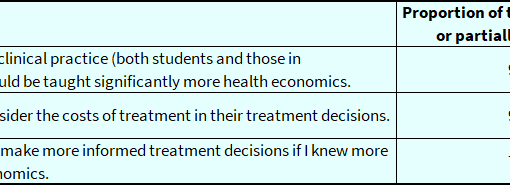In 2014, the government led by Juha Sipilä presented the growth strategy for the Finnish healthcare sector. This was a recognition of a sector that has invested significantly in health research and has risen to the absolute top of health research in many sectors globally. Finland offers a tremendous functioning ecosystem for medical research.
Now, in 2021, we already have a third government that has continued to commit to this strategy, at the very least. However, the recent uproar over funding cuts in science did not increase confidence in the current government’s desire to improve public funding for biomedical research in Finland. The key pillars of the growth strategy include the National Cancer Centre, the Genome Center and the Finnish Biobank Cooperative FINBB. They are still waiting for the necessary government start-up grants. Despite the lack of promised government aid, projects have progressed, although no decision has yet been taken, for example, on the funding of a national drug development centre.
The pharmaceutical industry is emphatically based on research, development and innovation, which requires high-level and specialised expertise. Finland has a unique opportunity to develop into a leader in personalised medicine and healthcare, and to act as a leading nation in RDI activities in this field. However, it would require increasing public investment, as has been done in competing countries. It bears reminding there is international competition for and in medical research. A special feature of medical research and innovation is that it benefits not only the business community but also the well-being and health of citizens.
Pharmaceutical industry is investing
Pharmaceutical research brings investments to Finland. According to the Pharmaceutical Industry Association, in 2020, investments in the pharmaceutical sector in Finland amounted to EUR 330 million. Additionally, the industry invests EUR 50 million annually in free research drugs for Finnish healthcare. Globally, the pharmaceutical industry’s investment in research and development was approximately $ 190 billion in 2020 According to a report published by Evaluate Pharma in June 2021, these investments will grow at an annual rate of 3.2 per cent over the next five years.
Together, the pharmaceutical industry and the biotechnology industry are investing more in research and development than any other industry in the world: the automotive industry is second, the technology industry is third, and the software and data services industry is fourth.
So where exactly are these pharmaceutical investments being directed? In March this year, StartUS Insight released an analysis of 4,351 bio-industry companies, focusing on important trends in artificial intelligence, big data, gene editing, precision medicine, gene sequencing, synthetic biology and bioprinting. Of these, mass data, gene editing and artificial intelligence investment alone accounted for almost half. Investments by large international pharmaceutical companies focused on artificial intelligence, mass data and its analytics, but also on flexible production methods and new highly specific drugs. Another new issue is investment in digital therapeutic products, typically mobile-based software and apps.
The biomedical industry is thus undergoing a transformation. Deloitte Insight has identified five drivers that could create more disruption. These are the prioritisation of disease prevention and early diagnosis, the proliferation of personalised therapies, curative therapies, the digital therapies already mentioned and, in general, various highly specific interventions for diseases.
Curative therapies now in development
Currently as many as 960 companies report developing potentially curative therapies. Investment in cell and gene therapy was nearly $ 9 billion in 2019 alone. Furthermore, more than 1,000 clinical trials are underway. These trials aim to find completely curative therapies. There are only a few of these on the market, such as Gilead’s hepatitis C drug, SOVALDI.
In addition to infectious diseases, curative therapies can be used to treat genetic diseases in the initial stages. However, finding completely curative therapies for common public diseases such as heart disease, depression, diabetes or even dementias is still a long time coming.
InFLAMES – Centre of expertise in immunology
Immunology as a science has advanced by leaps and bounds, of which Covid-19 vaccines are an excellent example. New potential therapies based on this improved understanding of the field of immunology are well represented, for example, in the breadth and variety of European bio-industry companies. Of the 988 European companies surveyed by StartUS Insight last spring, 13 per cent (125) develop immunotherapies for autoimmune diseases or cancer. A further 12 per cent (116) work on advanced medical products; typically these are gene or cell therapy products. Ten per cent (98) of the companies operate with antibodies, and 101 companies are developing new vaccines to suit the Covid-19 era. Immunology is indeed on the rise.
International competition for research is fierce. Which is why it is so important to maintain a functioning and stimulating research ecosystem in Finland. The joint InFLAMES flagship project (Innovation Ecosystem based on the Immune System) of the University of Turku and Åbo Akademi University is a part of the Academy of Finland’s flagship programme. The aim of the InFLAMES flagship is to form an internationally recognised centre of excellence for immunological research and product development. The goal is to be a globally attractive partner for international companies and others. The InFLAMES flagship seeks to make a social and economic impact. The means of achieving this include business cooperation, increasing knowledge related to commercialisation, networks, as well as internationally high-level research and teaching.
We are now well on our way in reaching this goal!

Timo Veromaa, Professor of Practice



